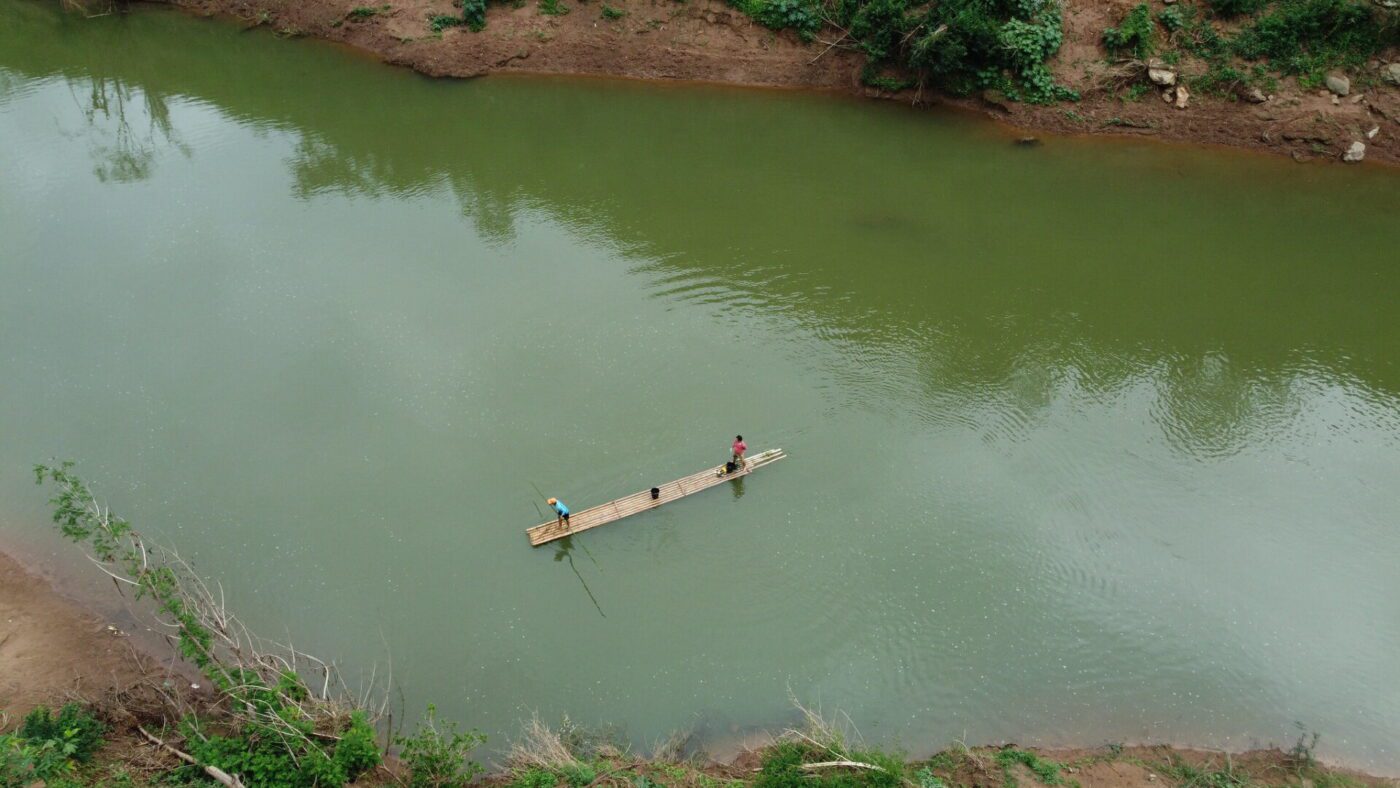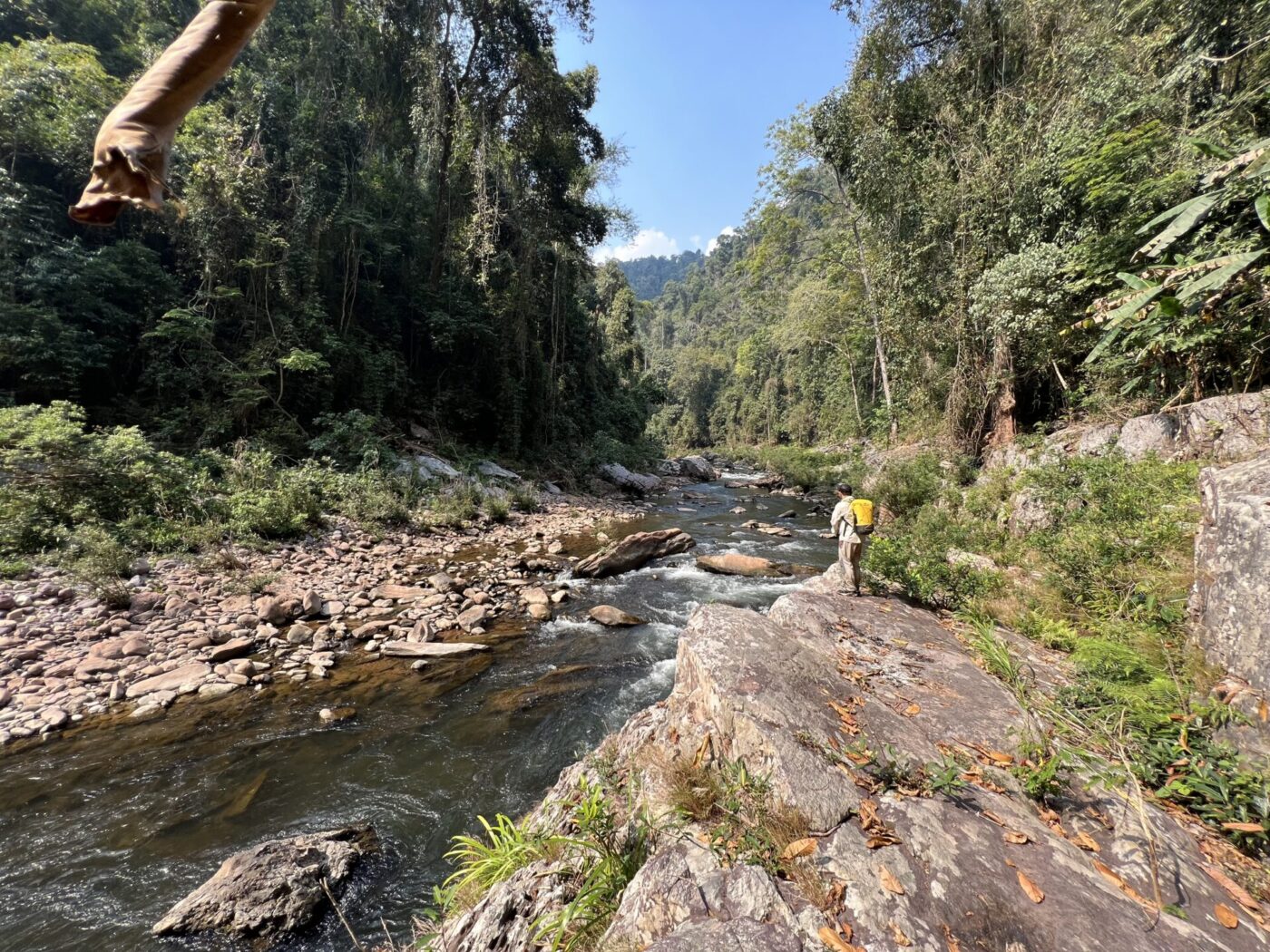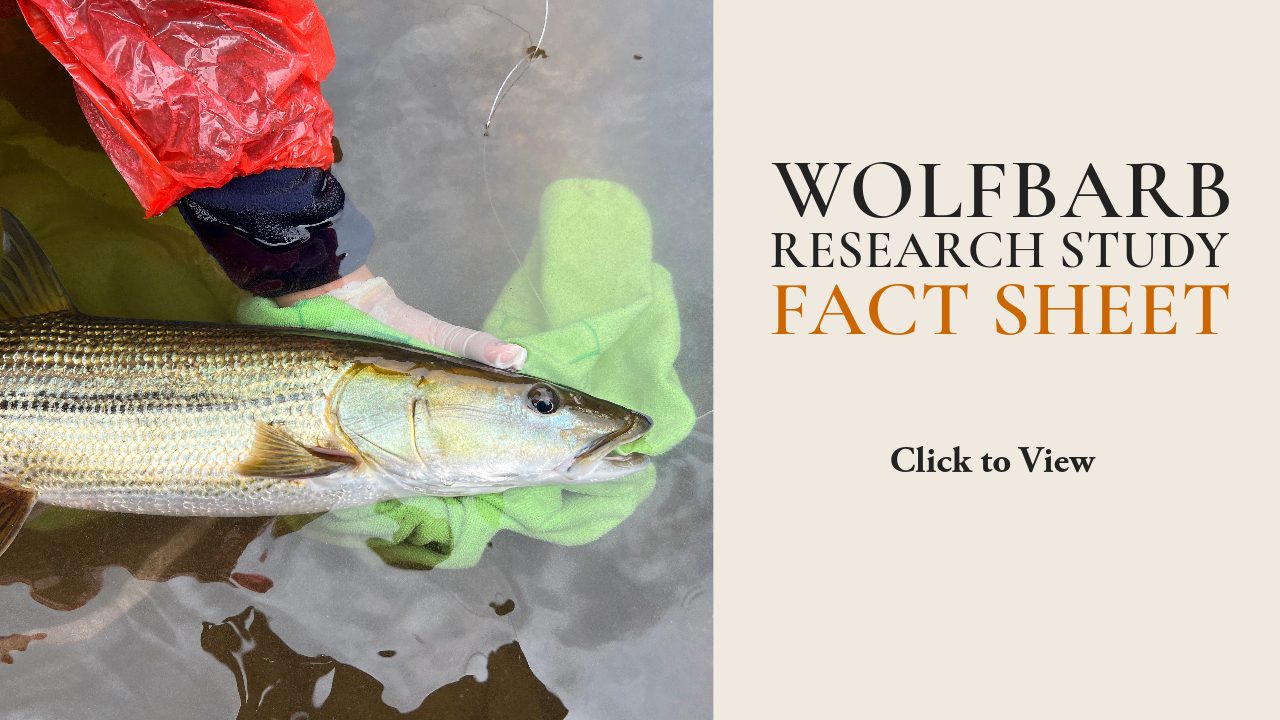Monday October 30, 2023
The deep pools of rivers often conceal fearsome predators, whose toothy maws would look right at home in a horror movie. But despite their mysterious nature and formidable appearance, these fish are far from monsters. On the contrary, they play a vital role in the functioning of a healthy river ecosystem, and in many cases they are facing increasing threats from habitat degradation, climate change, and human development. This is certainly true of the wolfbarb (Luciocyprinus striolatus), a critically endangered top predator that historically occurred in the rivers of both China and Laos, but which today remains only in Laos. Also called the monkey-eating fish, this species is known for not being picky when it comes to a meal. Although it can grow up to lengths of 2 meters (6.6 feet), relatively little is known about its behaviors, or the habitats that it requires to survive. To help fill in these knowledge gaps and develop a plan to conserve the species, FISHBIO staff in Laos worked in cooperation with the Comité de Coopération avec le Laos, the Association Anoulak, and the Nakai-Nam Theun National Park Management Division on a survey project to map the species’ distribution in Laos and learn more about the condition of its remaining populations. The project, funded by the Critical Ecosystem Partnership Fund and IUCN, relied on hook-and-line sampling to capture adult wolfbarb, interviews with local fishers to learn about their catch of wolfbarb, and environmental DNA (eDNA) samples to determine the streams in which the fish can still be found.

After two years of work, the project has compiled valuable data on this rare and important predator, which will be vital in developing targeted plans for its conservation. Notably, eDNA and fishing surveys found that the species may have already been lost from portions of its previous range, including the Nam Phak River. However, the capture and tagging of multiple adult wolfbarb, and the detection of wolfbarb eDNA at 18 different locations across three different watersheds suggests there is still hope for conserving and recovering the species in Laos. Meetings with local communities that were conducted as part of the project helped to identify the major threats the species faces, which include mining activities, increasing drought, loss of prey due to overfishing, and sport fishing targeting wolfbarb. The project also worked with local communities to establish eight Fish Conservation Zones (FCZs), which are community-managed protected areas that will provide refuge habitat for wolfbarb and other aquatic species.

Although the species appears to have declined in abundance and may have already vanished from portions of its historic range, hope remains that local communities can work together to ensure the wolfbarb continues to prowl the rivers of Laos for years to come.
Check out our project video and species fact sheet to learn more about this project and plans for future wolfbarb research and conservation efforts.
Header image: Mr. Soumek, a professional fisherman with the FISHBIO team, holding one of three wolfbarb captured and tagged in Nakai-Nam Theun National Park.
This post was featured in our weekly e-newsletter, the Fish Report. You can subscribe to the Fish Report here.

